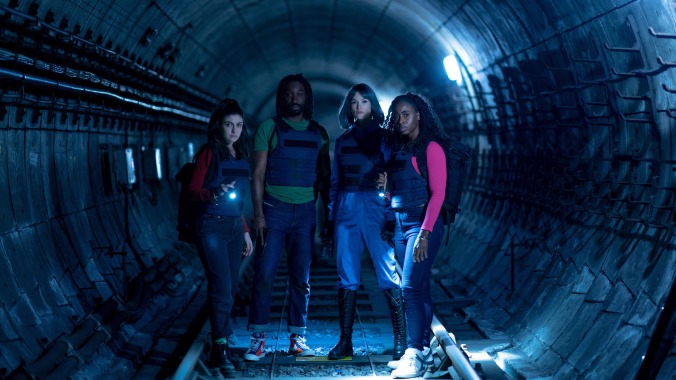Culprits review: A caper with class consciousness
This British heist show on Hulu and Disney+ has plenty of style and, thankfully, substance

We’ve seen how heist shows and films are handled: There’s a team, a job, a take, some twists, getaway vehicles, guns, and goons. The formula is useful, but what the creators ultimately do with that structure to tell a unique story is what makes it interesting. The British series Culprits comes with all the typical genre baggage we expect (including literal baggage, the cash-filled kind), but the eight-episode drama, which debuts December 8 on Hulu and Disney+, brings some fresh ideas to the format that make us think as well as thrill us.
Art stands out as an important element in Culprits and not just in the cinematic sense. As our hero David Marking (who assumes the new identity Joe Petrus following the heist) and queen thief Diane Harewood first establish their working relationship, they sit together on a bench in the Rothko exhibit at Tate Britain, framed and backgrounded by a wine red painting, its pinkish columns flanking the leads. It’s impossible to ignore how intentional this artsy backdrop seems to be. To further underscore its thematic importance, a character later waxes poetic about the Rothkos. He explains how when you see a Rothko in print somewhere, you feel like you get the idea, but face to face with one, the emotional weight of it becomes “brutal.”
It’s a bit like how you get the gist of what being a parent might be like, but don’t really know until you have kids, a reality David/Joe (played by a great Nathan Stewart-Jarrett) is confronted with when he settles down with a widower with two children of his own after he has fled Britain for the U.S. It’s like how you can intellectually understand how the great, big heist you’ve signed onto might go down according to The Plan, but you don’t fully know what you’ve gotten yourself into until you’re cracking safes and being shot at. Our protagonist gets to grapple with both of these realities, parenting realness and post-heist fallout, all over the course of this one season.
It’s interesting to view this show through the lens of labor, too. What is a team assembled to carry out a heist if not a type of temporary workforce? They’re seasonal employees, if you will, like the guy stocking shelves at Bath & Body Works during the holidays—exactly the same. This show forces us to consider the implications of how much (or how little) we’re allowed to know about our coworkers. When Harewood orchestrates The Plan, she assigns each team member a name based on their role in this operation; they are not to ever learn each other’s actual names. Once Driver turns up dead, however, and other teammates continue to be picked off one by one, it brings this policy into question, with survivors frantically digging through their possessions and scouring social media to summon secret means of contacting each other. They’ve collectively determined that they have to join forces if they are to protect themselves and their families from this mysterious threat.
